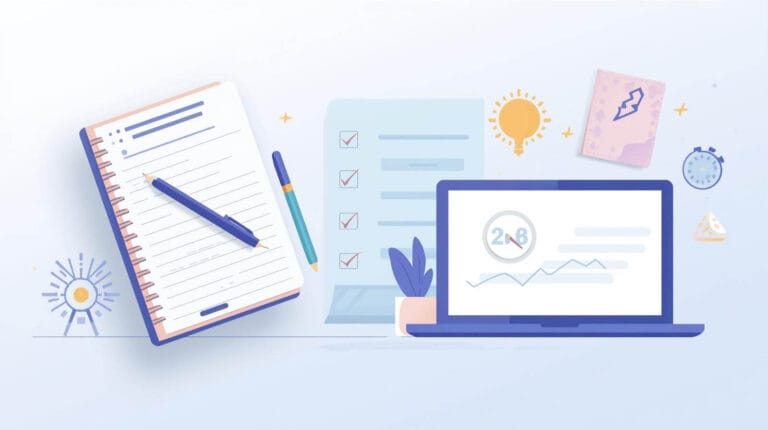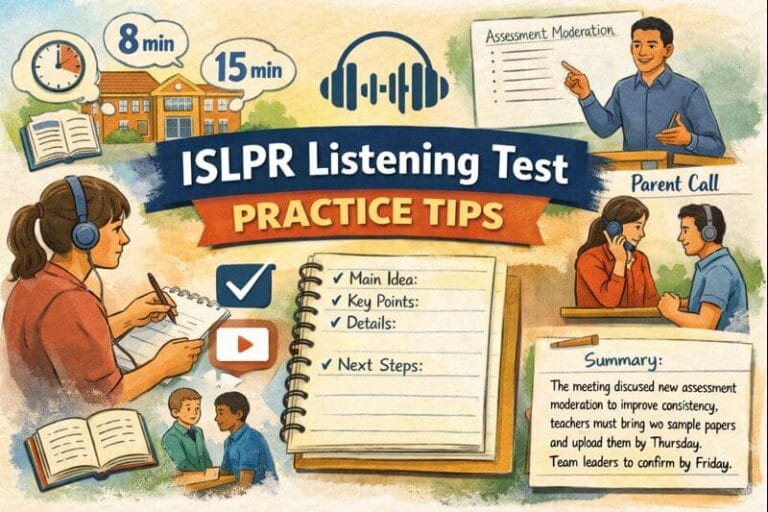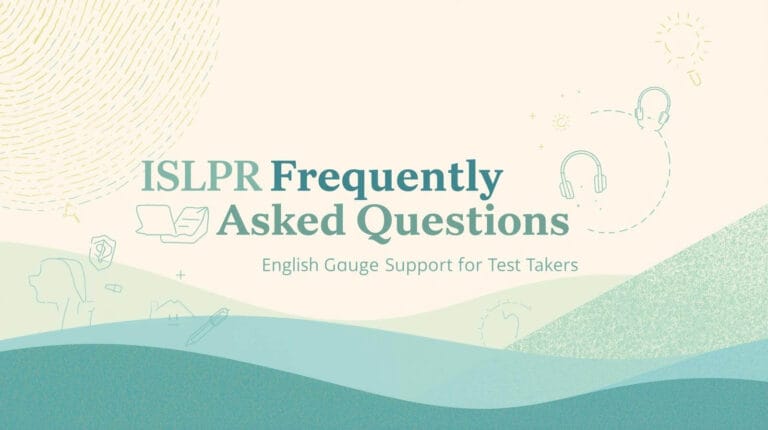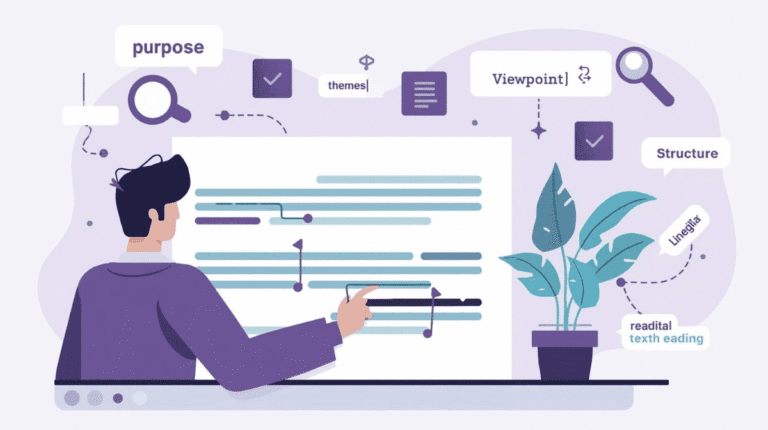Mastering the ISLPR listening component requires more than just acute hearing and a strong vocabulary. To excel, you must learn to identify main ideas ISLPR listening prompts deliver and do so with speed and accuracy.
Given that you hear each recording only once, developing strategies to capture the essence of what you hear is crucial. This essay explores why pinpointing main ideas is essential, outlines step-by-step techniques for doing so under exam conditions, and offers targeted practice exercises.
how the ISLPR Listening skills are assessed
In the ISLPR Listening Test your listening skills are assessed both during the interactive interview and through recorded materials.
At one stage of the interview you will be asked to listen to one or more authentic texts such as news stories, news commentaries, interviews, talkback segments, documentary excerpts, community announcements, advertisements or messages on answering machines.
Most recordings feature speakers of standard Australian English, though you may encounter brief sections in other English varieties. Typically, you will hear each text only once. Occasionally, a short segment might be repeated so the tester can check your understanding of specific details.
For longer texts you are welcome to take brief notes while listening. Keep your notes concise so that you can quickly refer to them afterwards. Once the recording ends, you demonstrate your comprehension by discussing the content with the tester.
During this discussion you may glance at your notes to prompt your responses but you must hand your notes to the tester when this part of the test is finished.
This format not only evaluates your ability to understand spoken English in a range of real-world contexts but also your capacity to extract and convey key information accurately and fluently.
Why Identifying Main Ideas Matters
In the ISLPR listening test you will encounter a variety of spoken texts ranging from academic lectures and professional discussions to informal interviews and everyday announcements. Examiners test your comprehension by asking questions about central themes, key arguments and summarising tasks.
If you focus on every detail you will lose sight of the overall message and miss critical points. By contrast, when you can reliably identify main ideas ISLPR listening prompts convey you free up mental resources for answering questions, note taking and delivering spoken responses with confidence.
1. Prepare Your Mind with a Quick Preview
Before the recording begins you often receive a brief instruction or read a short question prompt. Use this moment to prime your attention. Skim the question or instruction silently to note what the examiner seeks.
Are you expected to compare two viewpoints, list benefits and drawbacks or recount a process? By previewing the prompt you mentally set markers for main ideas.
For example if the question asks What are the three advantages of renewable energy mentioned you will listen specifically for advantages and ignore peripheral details. This focused approach allows you to identify main ideas ISLPR listening tasks require more efficiently.
2. Listen for Structural Signposts
Speakers naturally signal main ideas through their tone and phrasing. Familiarise yourself with common signposts:
Introduction Phrases: Expressions such as Today I will discuss or The purpose of this talk is often introduce the core topic.
Sequence Markers: Firstly, secondly, finally and similar words outline the structure. These markers tell you when a new main idea begins.
Emphasis and Pauses: A deliberate slowdown or volume change on certain words highlights importance. Pay attention when a speaker says I want to emphasise or Notice that.
Summary Phrases: At the end you may hear In conclusion or To sum up which signal a recap of main ideas.
By recognising these cues you can flag the main ideas as they appear and record them in shorthand without writing every word.
3. Develop an Efficient Note-Taking System
Effective note taking is key to capturing main ideas ISLPR listening tests demand. Your system should be simple and consistent so you do not waste time deciding what to write. Consider these steps:
One-Column Layout: Use a single column on your page. Each new main idea starts on a fresh line. This keeps your notes easy to scan when you speak.
Abbreviations and Symbols: Use consistent abbreviations for common concepts. For example write gov for government, env for environment and ben for benefits. Use numerical markers 1, 2, 3 to record sequential points.
Keywords Only: Do not write full sentences. Focus on the essence such as Renewable energy ben cost savings env impact.
Quick Review Marks: Immediately after the recording ends circle or highlight your most important notes. This visual emphasis helps you locate main ideas quickly when answering.
Practise this system until it becomes second nature. In the test you will save precious seconds by writing only what matters.
4. Train Your Ear with Focused Listening Drills
Building the skill to identify main ideas ISLPR listening scenarios presents takes deliberate practice. Use the following drills:
Segmented Listening
Choose a one-minute audio clip. Listen to it twice. In the first pass focus on gist and structure. In the second pass take notes on the main ideas only. After listening, check your notes against a transcript or summary. Note any missed signposts or keywords.
Question-Driven Listening
Write three summary questions such as What is the speaker’s main argument, What examples are given and What is the conclusion. Play a five-minute lecture and answer only those questions. This simulates exam conditions and trains your brain to look for main ideas.
Speed Skimming
Read a transcript at normal speed but only record the opening and closing sentences of each paragraph. Compare your summary with a full outline. This reading practice improves your ability to pick out main ideas and transfers to listening.
5. Use Mental Mapping Techniques
Even without writing elaborate diagrams under exam time constraints you can form a simple mental map:
Topic Chunking
As you listen divide the content into chunks mentally. For instance a three-point lecture becomes Chunk One, Chunk Two and Chunk Three. Associate each chunk with a single word or phrase in your notes.
Mind Tags
Tag each main idea with a unique marker such as a letter or number. For example tag environmental benefits as A, economic benefits as B and social benefits as C. When questions refer to benefits you instantly recall benefits A, B and C.
These mental mapping strategies reduce the cognitive load of remembering multiple points and help you recall main ideas accurately.
6. Anticipate and Paraphrase
During the recording, mentally reformulate main ideas in your own words. Paraphrase rather than copy. If the speaker says Governments must invest in renewable infrastructure to reduce carbon emissions you might summarise Invest in renewables to cut emissions. Paraphrasing forces active processing and ensures you grasp the essence. You will also avoid confusion when different vocabulary appears in question wording.
7. Overcome Common Pitfalls
Even well prepared candidates can stumble when identifying main ideas under pressure. Be aware of these traps:
Getting Lost in Details
Hearing a specific statistic or anecdote can distract you from the main point. Remind yourself that details illustrate main ideas but are not the main ideas themselves.
Misreading Signposts
Sometimes a speaker may list examples without marking them clearly. Practice spotting implicit signposts such as changes in tone or repetition of a key phrase.
Writing Too Much
Attempting to transcribe spoken language word for word slows you down. Keep your notes lean. Trust your ear to catch keywords and trust your memory to fill gaps during review.
By practising awareness of these pitfalls you will refine your ability to identify main ideas ISLPR listening tests expect.
8. Simulate Exam Conditions Regularly
To consolidate these techniques schedule regular full-length practice sessions. Use past ISLPR listening materials or find lectures and interviews online. Time yourself strictly. Record your responses to comprehension questions and summary tasks.
Review your answers and notes with a tutor or study partner. Identify weaknesses such as missing signposts, vague notes or weak paraphrasing. Focus your next practice on those areas.
Conclusion
Learning to identify main ideas ISLPR listening prompts deliver is a vital skill for success in the ISLPR test.
By previewing prompts, recognising structural signposts, adopting an efficient note-taking system, engaging in focused listening drills, using mental mapping, paraphrasing actively and avoiding common pitfalls, you will develop the speed and accuracy to capture central messages.
Integrate these strategies into a disciplined practice routine under exam-like conditions. On test day you will confidently present your understanding of main ideas and achieve your target scores. Good luck with your preparations!








These videos are really effective, and helpful, Can you please assist me to correct my writing activities,if you can send me the details of the fees that would be greatly appreciated. Further,my ISLPR test will be held on Wednesday 21st Of January 2026
By 5 January 2026, we will be launching a new tool that will allow students to self-test and practise essay writing, with guided feedback to help improve structure, language use, and clarity.
Regarding correction of writing activities, support options and fees will be shared shortly once the tool is live. This will give you a flexible and affordable way to practise regularly ahead of your test.
Noted that your ISLPR test is scheduled for Wednesday, 21 January 2026. The timing of this tool should support your final preparation well.
We now have a tool that can help you check your writing: https://islprwritingtest.com/. As of 5 January 2026, the tool is live and available for students to self-test and practise essay writing, with guided feedback to improve structure, language use, and clarity. This tool is completely free to use.
Regarding correction of writing activities, support options and fees will be shared shortly. This will give you a flexible and affordable way to practise regularly ahead of your test.
Please note that your ISLPR test is scheduled for Wednesday, 21 January 2026. The timing of this tool should support your final preparation well. Check it: https://islprwritingtest.com/